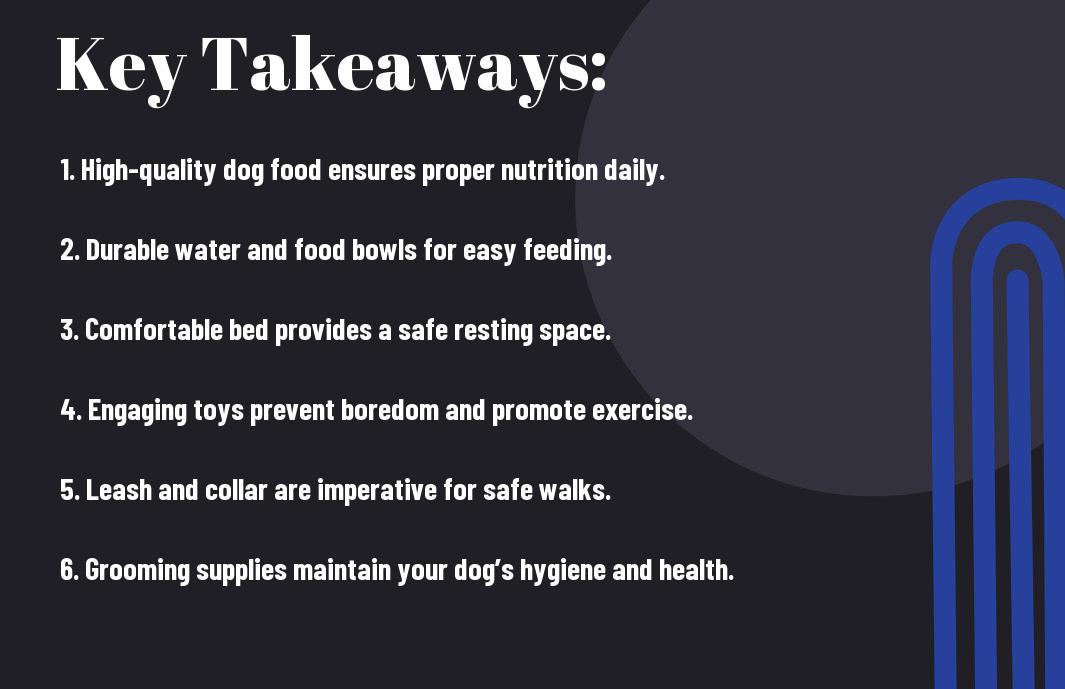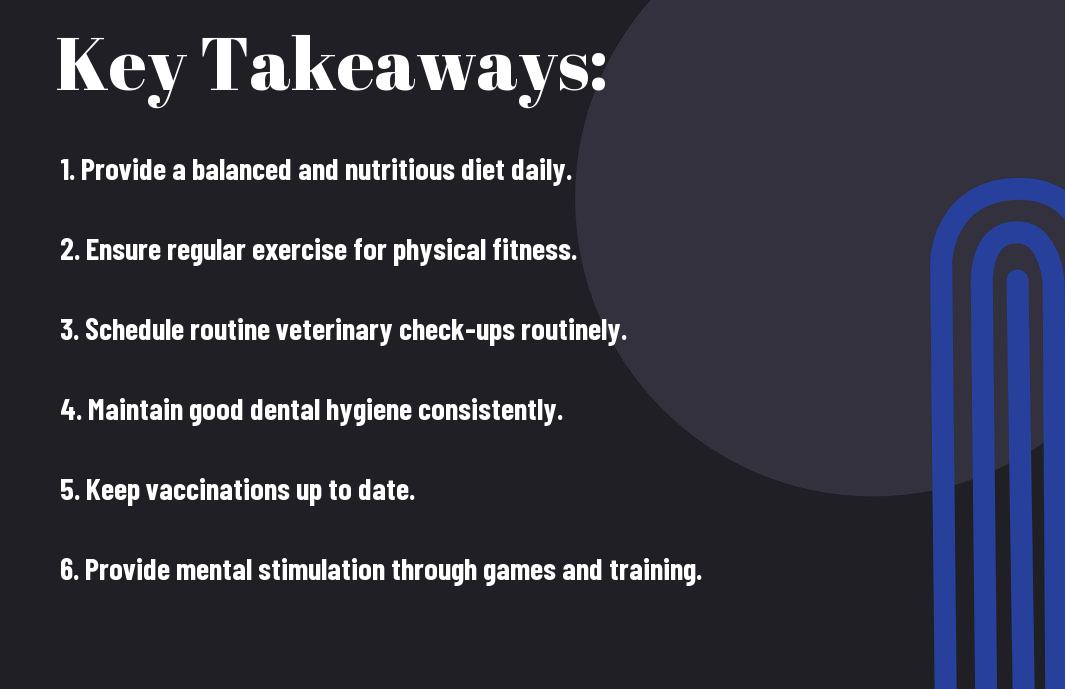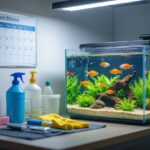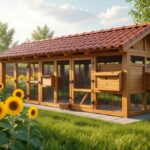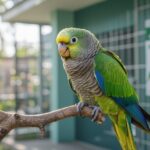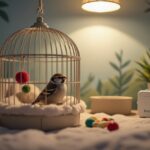Most bird owners want to ensure their feathered friends enjoy a safe and healthy indoor environment. Creating such a space involves identifying and eliminating potential hazards while incorporating features that enhance your bird’s well-being. From choosing non-toxic plants to ensuring proper ventilation and avoiding dangerous objects, this guide will provide you with actionable steps to transform your home into a sanctuary where your birds can thrive without risks. Let’s get started on making your indoor environment a haven for your avian companions!

Understanding Bird Safety
While creating a safe indoor environment for your feathered friends, it’s necessary to understand the potential dangers that can lurk in your home. Birds are sensitive creatures, and their well-being can be affected by various environmental factors. As a responsible bird owner, you must familiarize yourself with the common hazards that can threaten their safety and health. By recognizing and mitigating these risks, you can foster a happier, healthier life for your birds.
Common Indoor Hazards for Birds
Hazards can come from many seemingly innocent objects and activities in your home. For instance, items such as certain houseplants, candles, and non-stick cookware can release toxic fumes that are harmful to birds. Additionally, small objects that can be ingested, such as paper clips, rubber bands, or even tiny decorations, pose a choking hazard. Birds are naturally curious and often explore their surroundings with their beaks; thus, ensuring that your home is free of these potential threats is crucial in preventing accidents.
Another common hazard to be aware of is open windows and doors. Birds often try to fly towards bright outdoor spaces, which may lead to fatal injuries such as crashes against hard surfaces or even escaping into the wild. Always make sure to secure windows with screens and be vigilant when you’re opening doors. Your attentiveness is key to maintaining a safe space for your birds.
Importance of Air Quality
There’s no denying that air quality plays a vital role in your birds’ overall health. Birds have high metabolic rates, and therefore, they require clean, fresh air to thrive. Poor indoor air quality, which can result from chemical fumes, inadequate ventilation, or household allergens, can lead to severe respiratory issues in birds. It’s imperative that you monitor and improve your home’s air quality to keep your feathered companions safe from harm.
Plus, maintaining excellent air quality can significantly enhance the mood and well-being of your birds. Regularly open windows to allow fresh air circulation, use air purifiers designed with HEPA filters, and refrain from using harsh chemicals for cleaning. Also, be mindful of using bird-safe wood treatments and sprays. These practices not only protect your pets but also create a healthier atmosphere for everyone in your home, ensuring a happier environment for you and your avian friends.

Creating a Safe Space
One of the primary aspects of ensuring a bird-safe indoor environment is to create a space that prioritizes your feathered friend’s safety and comfort. To do this effectively, you will need to focus on two main areas: choosing the right cage and arranging the living environment. Both of these components work together to create an ideal habitat for your bird, allowing them to thrive while minimizing risks.
Choosing the Right Cage
Cage selection is crucial when it comes to providing your bird with a safe space. You want to ensure that the cage is spacious enough for your bird to move around freely and engage in natural behaviors like stretching, flapping, and climbing. Look for a cage that is made from non-toxic materials and has ample ventilation. Additionally, choose a bar spacing that is appropriate for your bird’s size to prevent any accidental escapes or injuries.
Incorporate a variety of perches and toys within the cage to keep your bird entertained and mentally stimulated. Ensure these accessories are made from bird-safe materials, as some everyday items can pose serious health risks. Regularly inspect the cage for any wear and tear, as sharp edges and broken parts can injure your bird. Be mindful of, the cage should feel like a safe haven rather than a prison, providing a comfortable retreat where your bird feels secure.
Arranging the Living Environment
Arranging your bird’s living environment is just as important as selecting the right cage. You should create a space that is free from hazards, such as toxic plants, open windows, and small objects that can be swallowed. Position their cage in a location where they can enjoy both natural light and interaction with family members, but avoid placing the cage near drafts or extreme temperatures.
The arrangement should also consider the placement of food and water dishes, making sure they are securely positioned and easily accessible. Consider including climbing structures and play areas around the cage to encourage physical activity. By ensuring your bird has a well-organized and hazard-free space, you’re not only promoting their wellbeing but also encouraging natural behaviors that contribute to their happiness. Always remember to observe how your bird interacts with their environment, making adjustments as necessary to maintain a safe and comfortable space for your beloved companion.

Essential Health Tips
Your indoor birds deserve a safe and healthy environment to thrive. To ensure their well-being, follow these important health tips:
- Provide a balanced diet that meets their nutritional needs.
- Schedule regular vet check-ups to detect potential health issues early.
- Prioritize grooming practices, including nail trimming and feather care.
- Maintain a clean and stimulating environment to promote mental health.
- Keep an eye on signs of stress or illness to mitigate serious health concerns.
After implementing these tips, you can significantly enhance the quality of life for your feathered companions.
Nutritional Needs of Indoor Birds
Clearly, providing a balanced and varied diet is crucial for your bird’s health. Make sure to include a combination of high-quality pellets, fresh fruits, and vegetables tailored to the species you have. Avoid feeding them processed human food, as it can contain ingredients that are toxic to birds.
Additionally, consider adding occasional healthy treats like seeds or nuts, but do so in moderation. Staying informed about the specific nutritional requirements of your bird species can prevent deficiencies and optimize their overall well-being.
Regular Health Check-ups and Grooming
Birds are often excellent at hiding their illnesses, making regular check-ups important. Schedule at least annual visits to an avian veterinarian who has experience with your type of bird. These visits will allow the vet to assess your bird’s health, recommend vaccinations, and address any *potential issues before they become serious, like respiratory problems or feather plucking.
Essential grooming practices also play a vital role in your bird’s health. Regularly trimming their nails can prevent painful overgrowth that can hinder mobility, while routine feather care helps keep their plumage in good condition. Additionally, introducing bathing opportunities can aid in moisture retention, helping to prevent skin conditions that arise from dryness.
Essentially, the combination of regular health check-ups and proactive grooming will go a long way in ensuring the longevity and happiness of your indoor birds. Be observant of any changes in behavior or appearance, as early detection of health issues is key to successful intervention.
Continuous Monitoring and Adaptation
After establishing your bird-safe indoor environment, it’s crucial to maintain an ongoing assessment to ensure your feathered friends thrive. Conditions in your home can change over time due to various factors, and a proactive approach is necessary to maintain their safety. Continuous monitoring involves routinely checking for risks and making adjustments as needed to uphold a safe haven for your birds.
Evaluating the Environment Regularly
Any time you notice changes in your birds’ behavior or the environment around them, it’s a good idea to conduct a thorough evaluation. Look for potential hazards such as unsecured windows, toxic plants, or areas that may pose a risk of escape or injury. Regular evaluations can help you spot these concerns before they become a more serious threat, ensuring your home remains a sanctuary for your birds.
Additionally, you should assess the overall health of your birds periodically. Changes in their diet, activity levels, or social interactions can signal underlying issues that might be connected to environmental factors. By paying close attention, you can make informed decisions about their living space, ultimately keeping them safe and happy.
Adjusting to New Challenges
Regularly invest time in understanding that your bird-safe indoor environment is dynamic and may require adjustments based on new challenges that arise. As seasons change, you may find that heating systems can introduce dry air, which can lead to respiratory issues for your birds. Similarly, new furniture or household practices might unintentionally create hazards, such as cords or fabric that could pose a choking risk.
This adaptability is key to a successful bird-friendly atmosphere. For instance, you might introduce a humidifier during dry winter months or replace toxic plants with safer alternatives. Stay informed and be ready to address any challenges that could impact the well-being of your birds. Keep in mind, the safety of your feathered companions is paramount, so always prioritize vigilance and flexibility in your approach to their environment.
Final Words
Upon reflecting on how to create a bird-safe indoor environment, it’s evident that your attention to detail and proactive measures can make a significant difference in ensuring the well-being of your feathered companions. By implementing strategies such as bird-proofing windows and doors, choosing safe houseplants, and being mindful of dangerous household items, you can minimize risks and provide a secure space for them to thrive. It’s equally important to monitor your bird’s behavior and health closely, as this can help you identify any potential threats in their environment. Your dedication to creating a harmonious living space not only enhances their quality of life but also deepens the bond you share with them.
Moreover, educating yourself about the specific needs and behaviors of your birds will empower you to make informed decisions that benefit their overall safety and happiness. Consider consulting with avian experts or literature to gain greater insights into keeping your indoor environment bird-friendly. Note, every small change contributes to a larger impact on their safety. By actively engaging in safeguarding your indoor space, you’re taking responsible steps toward nurturing a joyful, secure, and enriching environment for your beloved birds.
FAQ
Q: What are the necessary steps to ensure my indoor environment is safe for birds?
A: To create a bird-safe indoor environment, consider the following steps:
1. **Remove Toxic Plants**: Ensure your home is free of any plants that are toxic to birds, such as azalea, oleander, and philodendron. Instead, opt for bird-safe plants like spider plants and rosemary.
2. **Secure Windows and Doors**: Install screens on windows and ensure that all doors are secure to prevent accidental escapes. Consider using window decals to alert birds to the glass barrier.
3. **Avoid Household Hazards**: Keep toxic materials like cleaning supplies, aerosol sprays, and non-stick cookware out of reach. Additionally, be mindful of open flames, hot surfaces, and exposed electrical cords that may pose a danger to curious birds.
Q: Can I use any type of lighting in a bird-safe indoor environment?
A: Yes, but with caution. Avoid using full-spectrum lighting that emits harmful UV rays. Instead, choose bird-safe LED or fluorescent lighting that is specifically marked as safe for pets. Ensure that lighting fixtures are secured and not within reach of birds to prevent injury. Regularly check and replace bulbs to minimize flickering, which can be stressful for birds.
Q: How do I create a stimulating yet safe space for my birds indoors?
A: To create a stimulating indoor space for your birds, consider the following:
1. **Provide Enrichment**: Incorporate engaging toys, perches of different sizes, and safe foraging materials to encourage natural behaviors. Rotate toys regularly to keep their environment fresh and stimulating.
2. **Designate Flight Spaces**: If possible, allow for room where they can fly safely. Ensure that there are no obstacles, and use safe barriers to prevent them from leaving the room or colliding with windows.
3. **Routine Interaction**: Spend time talking, training, and interacting with your birds daily. This fosters a bond and provides them with mental stimulation. You may also consider installing a bird-safe outdoor aviary or using bird-safe harnesses for supervised outdoor time.


